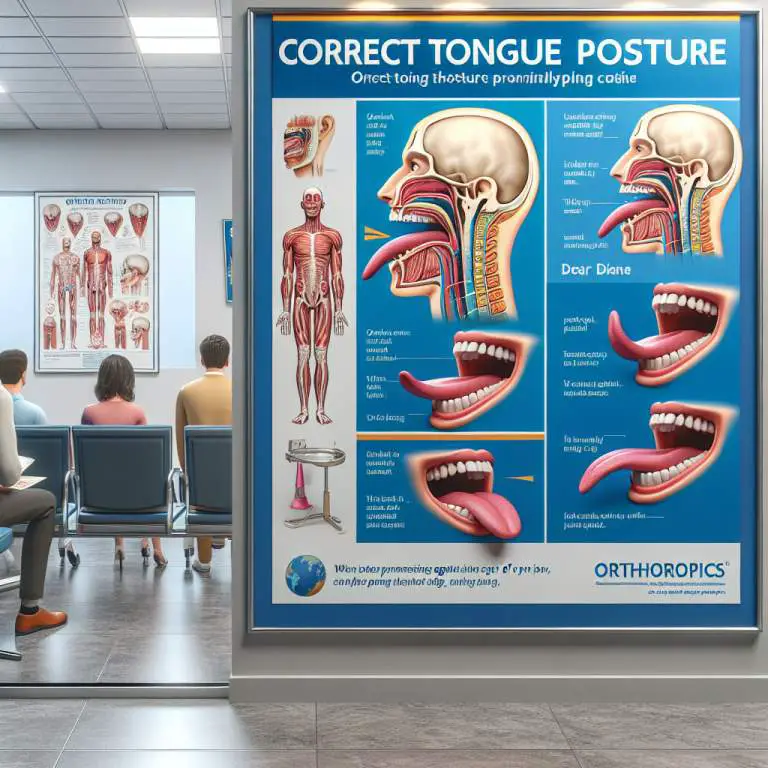How to breathe properly while mewing?
To maintain proper breathing while practicing mewing, keep your mouth closed and breathe through your nose. Ensure your tongue rests against the roof of your mouth, but don’t press too hard. Focus on taking slow, deep breaths to help keep your tongue in the correct position without disrupting your breathing pattern.

How does proper tongue posture affect breathing during mewing?
When you practice mewing, which means keeping your tongue pressed against the roof of your mouth, it can change how you breathe. If your tongue is in the right spot, it opens up your airway more. This makes it easier for air to flow in and out of your lungs.
But if you’re not doing it correctly, you might find it hard to breathe. That’s because if the tongue blocks part of your throat while trying to mew, less air can pass through. So, getting the tongue posture right is key to breathing well while mewing.
What are the common mistakes to avoid while breathing and mewing?
A big mistake some people make when they start mewing is forgetting to breathe through their nose. Breathing through your mouth instead can mess up how effective mewing is. It’s important to keep breathing through your nose so that everything works like it’s supposed to.
Another mistake is pushing the tongue too hard against the roof of the mouth. This can make you feel like you can’t breathe well. The trick is to find a balance where your tongue is firmly against the top of your mouth but not so much that it makes breathing tough.
Can mewing improve overall breathing quality?
Yes, over time, practicing proper tongue posture with mewing can help make your breathing better. By training your tongue to stay in the right place, you help keep your airway open wider. This means more air can get in and out easily, which might help you breathe more smoothly.
Also, for some people who snore or have sleep apnea (which means they stop breathing for short times while sleeping), getting better at mewing could help with these problems too. But remember, everyone’s different, so what works for one person might not work for another.
How to maintain correct tongue position for effective mewing without compromising on breathing?
To keep doing mewing right without messing up how you breathe, start by making sure only the tip of your tongue touches just behind your upper front teeth. The rest of your tongue should press lightly against the roof of your mouth. This way, you won’t block air from moving freely.
Also, practice keeping this position as much as you can during the day but don’t forget to relax and breathe normally through your nose. With time and practice, this will become a habit that doesn’t interfere with how well you can breathe while still getting all the benefits from mewing.
| Tip | Description |
|---|---|
| Breathe Through Your Nose | Ensure you’re breathing through your nose, not your mouth. This supports the proper tongue posture encouraged by mewing. |
| Relax Your Jaw | Keep your jaw slightly open and relaxed to avoid tension while maintaining your tongue’s position on the roof of your mouth. |
| Maintain Posture | A straight, aligned posture helps keep the airway open, facilitating easier nasal breathing with correct tongue positioning. |
| Practice Diaphragmatic Breathing | Focusing on deep belly breaths can help maintain a steady, comfortable breathing pattern without disrupting tongue posture. |
| Use Breathing Exercises | Incorporate specific nasal breathing exercises into your routine to improve your ability to breathe comfortably through your nose while mewing. |
| Gradual Adjustment Period | Allow yourself time to adjust to this new way of breathing and positioning; it may feel unnatural at first but will become more comfortable over time. |
| Avoid Overexertion | If you find it difficult to breathe, relax your technique slightly. It’s important not to force the position too much, which could lead to discomfort or improper technique. |
| Stay Hydrated | Maintaining good hydration can help keep the nasal passages clear, supporting better nasal breathing while practicing mewing. |
| Consult a Professional | If you’re having significant difficulty with breathing techniques or tongue positioning, consider consulting an orthodontist or speech therapist familiar with mewing for personalized advice. |
What exercises can help in mastering the art of breathing while mewing?
To get better at breathing while mewing, there are some exercises you can try. One popular exercise is called “balloon blowing.” This involves taking a deep breath and then pretending to blow up a balloon. This helps you learn how to control your breath and keep your tongue in the right spot.
Another helpful exercise is “nose breathing.” Practice breathing in and out through your nose while keeping your mouth closed. This encourages proper tongue posture by making you use your nose for breathing, which is how it’s supposed to be done when you’re mewing correctly.
How long does it take to see improvements in breathing while practicing mewing?
The time it takes to see improvements in breathing from mewing varies from person to person. For some, changes might be noticeable within a few weeks of consistent practice. It’s important to keep at it every day for the best results.
However, for others, it could take several months before they notice significant changes. Patience and consistency are key when practicing mewing. Remember, this is about retraining your body’s habits, which doesn’t happen overnight.
Are there any risks associated with incorrect breathing techniques when mewing?
Yes, using incorrect breathing techniques while mewing can lead to problems. If you breathe through your mouth instead of your nose, it might make things worse. Mouth breathing can dry out your mouth and throat, leading to discomfort and other issues.
Also, not positioning your tongue correctly or forgetting to breathe properly can cause tension in the jaw and neck. It’s crucial to follow the correct methods and listen to your body. If something feels wrong, take a step back and review the basics of proper tongue posture and nasal breathing.
Final Thoughts
Mewing combined with proper breathing techniques can offer benefits like improved airway function over time. The key is patience and consistency in practice. Start with simple exercises like balloon blowing and nose breathing to build good habits.
If you’re unsure about whether you’re doing it right or if you experience discomfort, consider seeking advice from a professional. They can provide personalized guidance based on your unique needs. Remember, improving your breathing through mewing is a journey that requires dedication but can lead to rewarding outcomes.







